- What’s an Inland Beach Vacation?
- Go Go Go
- Shanghai, Xitang, Wuxi
- A Jiangnan Homecoming
- Xian the Ancient Capital
- Xian & Its Glory
- (Other) Foods
- (Muslim Street) Foods
This post is about transportation.
Shanghai Maglev
Shanghai Maglev is a silly train system with two terminals and no stations. For those arriving at the airport, it takes you to the middle of Pudong, far from anywhere you’d likely go as a tourist. To get to the heart of Shanghai, you can connect on to the subway system or hail a cab. However, you can also get both of those directly at the airport. In other words, the Maglev adds a level of logistics complexity (maybe also cost) over its alternatives.
For many of us, though, the Maglev is irresistible once we read about it. It’s one of the world’s few magnetic levitation trains, and those things are super fast. Over 1/3 faster than “high speed” trains, in fact.
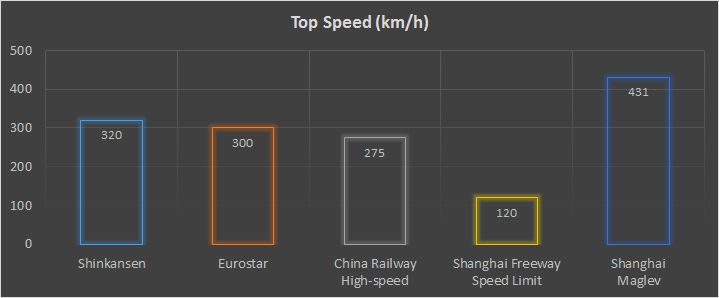
Why would I not make a chart whenever I get a chance?

Riding the Maglev
The stations weren’t fully accessible, and taking the escalator with kids, luggage, and a stroller was rather painful. It was worth it, though. The train was amazingly fast and smooth, that it felt like flying on the ground. The best was when two opposing trains passed each other, which happened with a loud *zonk* in a split second. There was no such thing as seeing other passengers’ faces through the windows. You’d blink once and miss that other train entirely.
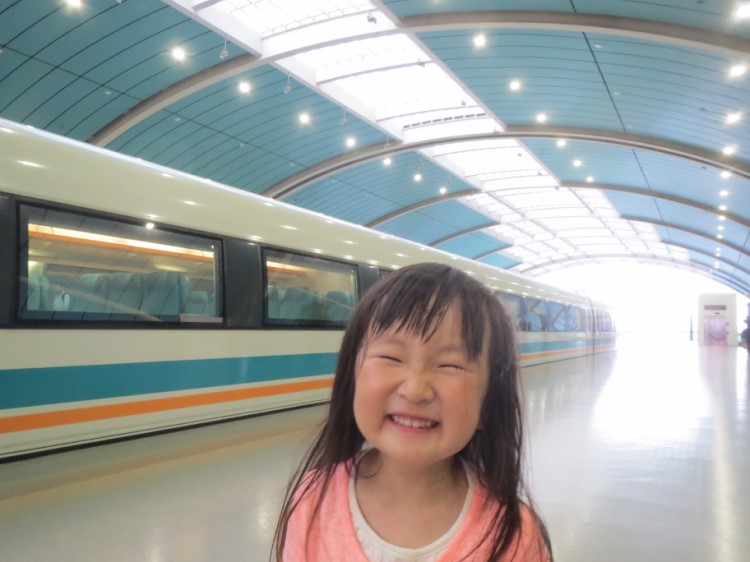
I wasn’t the only one excited about the Maglev
High Speed Rail
Hong and I have fond memories of riding those old, clunky sleeper trains all over China. These days, however, many routes have been upgraded to high-speed rails (CRT stands for China Rail High-speed). They are not Maglev, but still multiples faster than other ground transportation.
I took one with my parents on a half-day trip to Wuxi, and the fast service connected the two cities in under an hour. For kicks, I booked ourselves second class seats on the outbound, and first class on the return. For such a short trip, it’s hard to say whether the roomier seating made a difference, though the price difference when converted to USD was quite nominal.
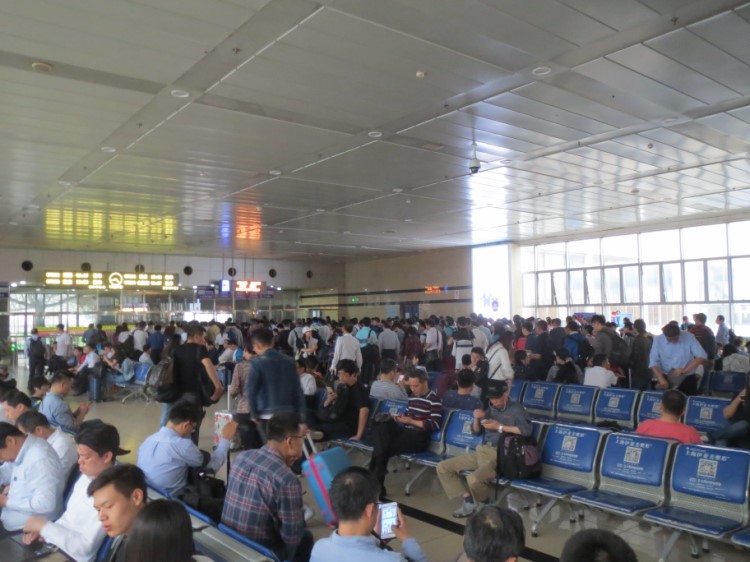
Shanghai’s main train station
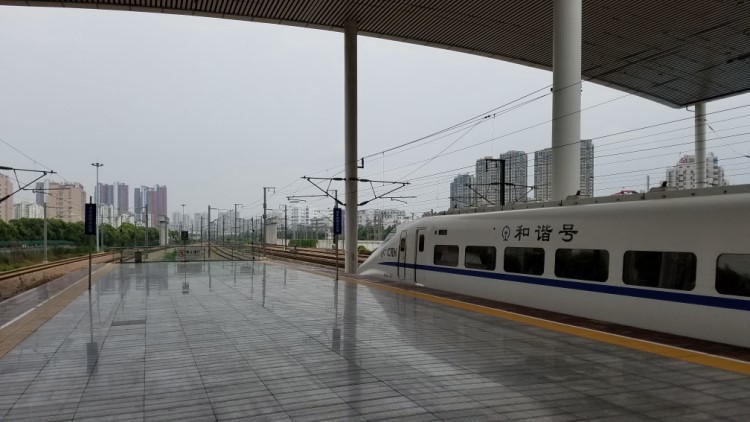
CRT platform in Wuxi
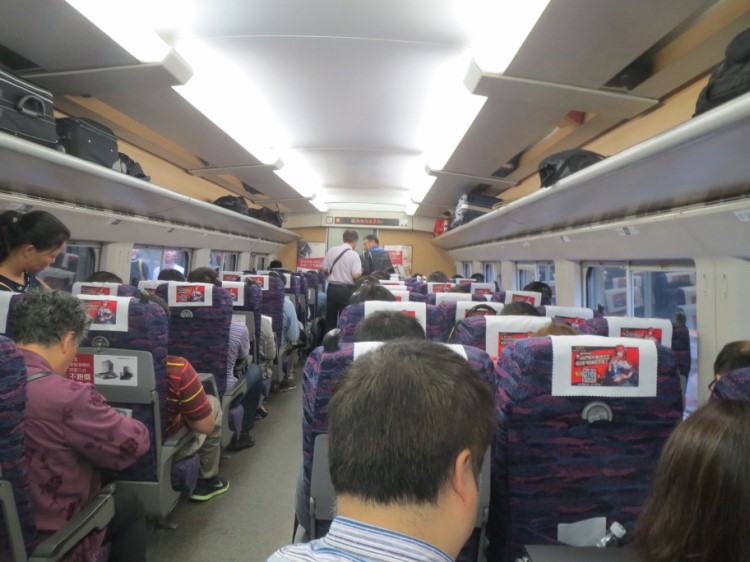
Second class – six seats per row
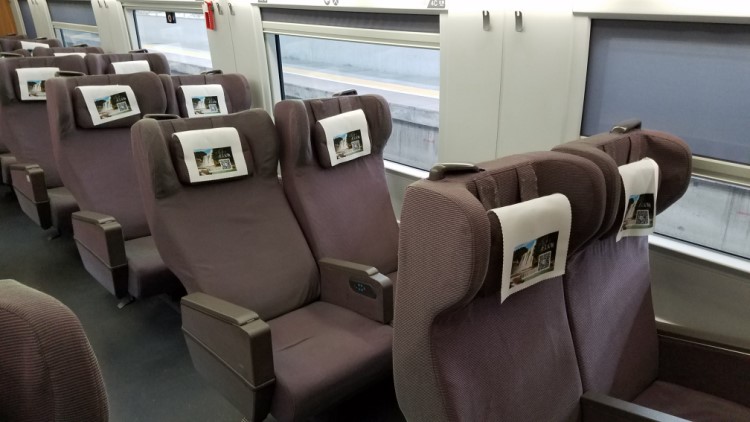
First class – four seats per row
Booking the train tickets was surprisingly inconvenient. Online and kiosk purchases were limited to people with Chinese bank accounts, so foreigners had to either queue with cash in the crowded train station, or go through a travel agency. Anyone with limited vacation days and a not overly tight budget may prefer the latter. I ordered ours and picked them up at our hotel. The various travel agent fees added up to be an 100% surcharge over the base ticket cost, which seemed ridiculous. However, the total cost of $40 round trip per person still felt like a good deal compared to trains in the U.S..
Subway & Bus
Hong and I had some limited experience with local public transit in China, and were not eager to try it again. Cabs were so cheap anyway! Little did we realize how difficult hailing a ride could be, or how bad traffic could be. We ended up taking the subway and bus as the last resort.
And… were we surprised by the changes over a decade later! I’m not just talking about the massive infrastructure upgrades (Shanghai had gone from two lines to the world’s most expansive subway system), which were easy to read about on paper. The entire atmosphere including the system’s cleanliness, the crowd’s orderliness, and the ridership’s etiquette, had massively improved. Yes the passengers could still be a bit impatient and pushy given the population density, but the overall behavior had become unbelievably more civilized. I am now more comfortable riding the subway in Shanghai or Xian, than I would be in any city in America.
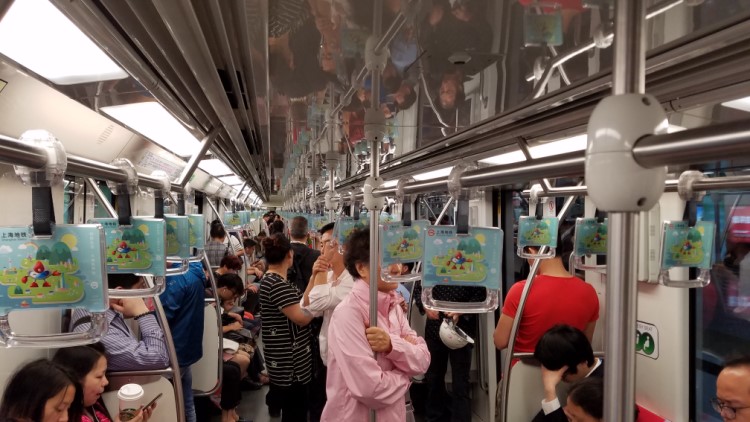
Shanghai subway
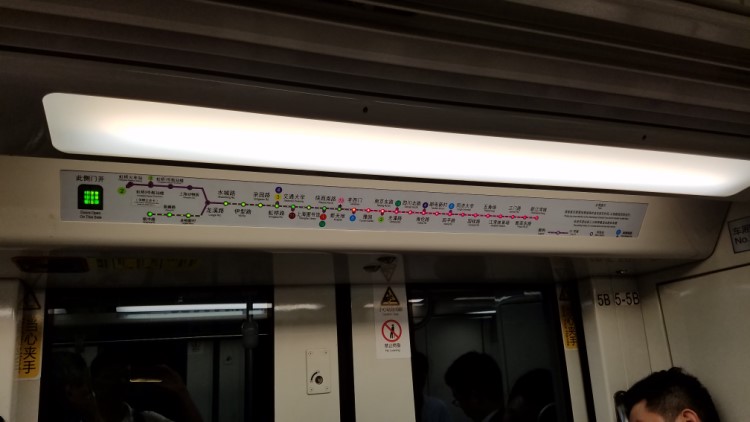
Shanghai subway route map
Additionally, I was so glad to have taken the Shanghai subway and witness the technology on display. In the U.S. advertising in subway stations usually involves posters glued to the walls, so when I saw the large LCD TV screens embedded in the Hong Kong and Seoul subway stations, I was already blown away. Shanghai took it to a whole other level by having digital displays in the tunnels between some stations. As the subway trains traveled at top speed, these colored screens were synced to the train’s movement and made it look like the videos were traveling on the exterior wall alongside the viewers. My dad and I had a debate about how the technology worked, and neither person could clearly articulate our theories.
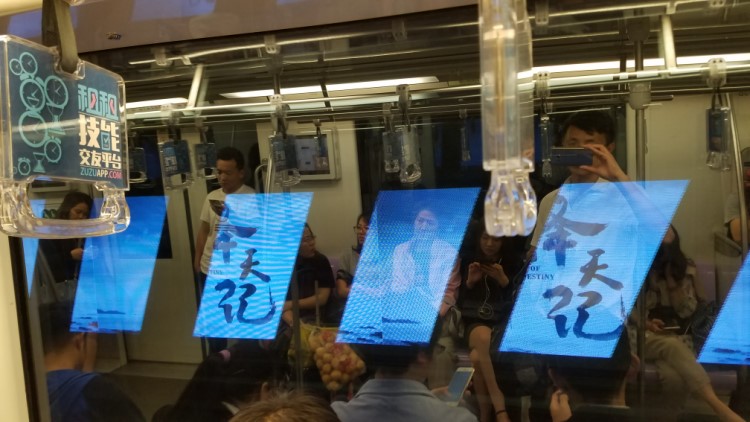
A TV outside each train car window? No these were serious “moving” pictures.
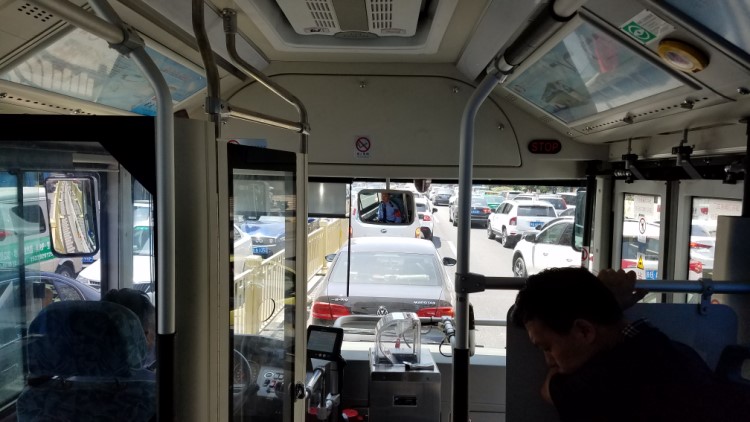
Bus in Xian

People yielded seats to mom & kids on the bus!
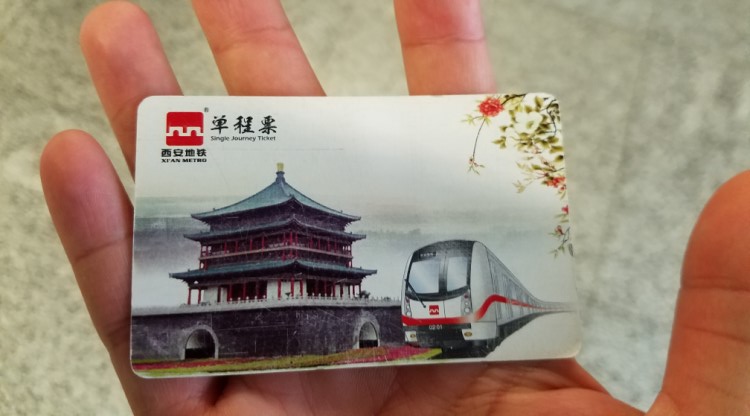
Contactless single-journey (reusable) subway ticket in Xian
Taxi
Shanghai has its fair share of $500 luxury hotels, and its skyline rivals the most futuristic cities around the world. In comparison, a 25-minute cab ride crossing the river from Pudong for under $6 seemed almost unfairly cheap. Even when viewed as a multiple of the subway fare (~10x), hailing a ride here is more affordable than it is in cities like New York.
Xian has a lower cost of living and the taxis are even cheaper. Our hour-long ride from the airport was $20 inclusive of toll. Going from place to place within the city walls usually cost the base fare, which was slightly more than $1.
Flight
There’s not much difference between the flying experience in China and the flying experience elsewhere. One exception: the government’s airspace control. We were unfortunate (or maybe fortunate) to witness one episode, where when the plane was ready to roll, it was announced that departure was being delayed. No explanation was given, but it was obvious that (1) it was out of the airline’s control, (2) it wasn’t because of weather or traffic on the ground, (3) the captain had no idea how long it would take.
The crew was so confident about the length of the delay that they began meal service… I was simultaneously impressed by the situation’s helplessness and the crew’s attentiveness to keep us from hunger at lunch time. In the US we had been delayed in the past, for far longer, without a single drop of water. It wasn’t a very tasty meal but the common sense approach was much appreciated. Kudos China Eastern!
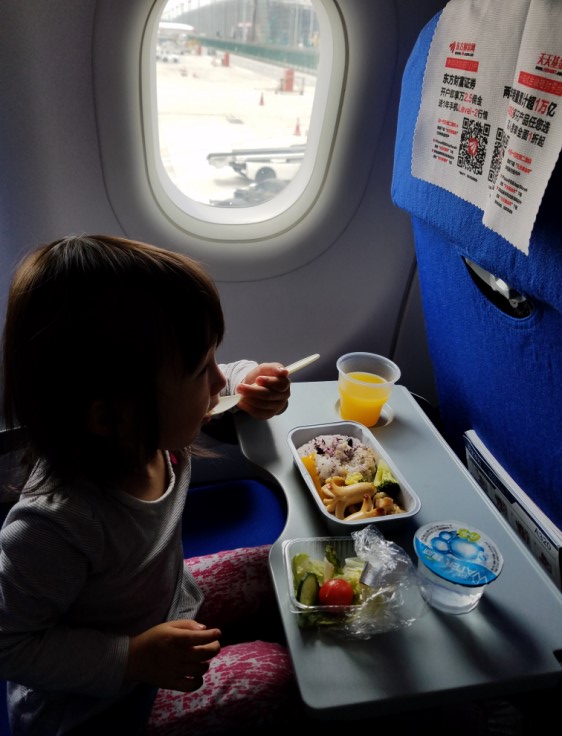
Our first meal in an airplane on the ground!
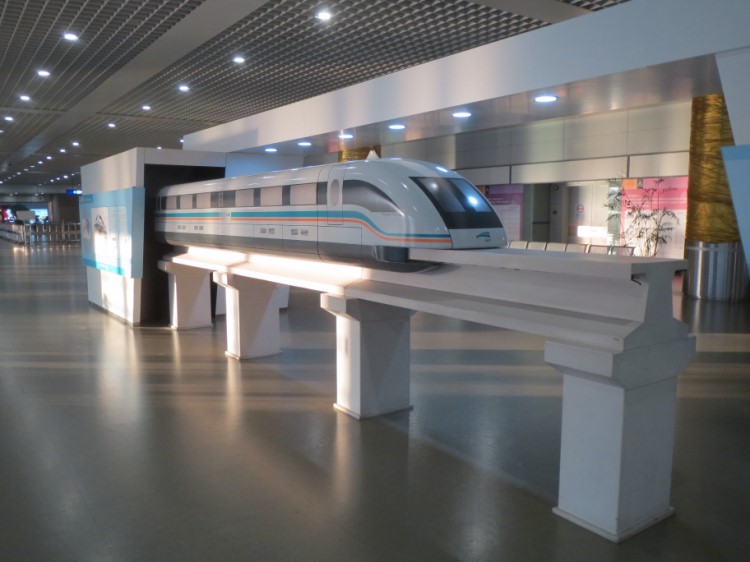
An Inland Beach Vacation (4/8) – A Jiangnan Homecoming – Peter's Blog
June 10, 2017 at 3:39 pm[…] Go Go Go […]
An Inland Beach Vacation (5/8) – Xian the Ancient Capital – Peter's Blog
June 11, 2017 at 10:52 pm[…] Go Go Go […]
An Inland Beach Vacation (6/8) – Xian & Its Glory – Peter's Blog
June 13, 2017 at 2:50 am[…] Go Go Go […]
An Inland Beach Vacation (7/8) – (Other) Foods – Peter's Blog
June 13, 2017 at 11:52 pm[…] Go Go Go […]
An Inland Beach Vacation (8/8) – (Muslim Street) Foods – Peter's Blog
June 15, 2017 at 1:36 am[…] Go Go Go […]
An Inland Beach Vacation (1/8) – What’s an Inland Beach Vacation? – Peter's Blog
June 15, 2017 at 1:37 am[…] Go Go Go […]
China 2019 (5/10) – On To China – Peter's Blog
October 17, 2020 at 2:46 pm[…] few days later, we took a high-speed train to Chongqing 重慶. I had previously praised the speedy and efficient transportation system in China, but it took dragging children through these train stations to fully appreciate the incredible […]
SEA 2023 (8/17) – Overnight Train to Chiang Mai – Peter's Blog
August 20, 2023 at 3:24 am[…] felt fishy that none of these sites mentioned alternatives. For traveling in China, as an example, buying train tickets directly from the state required cash or a Chinese bank account, so travel agencies absolutely make sense for foreigners who need to book in advance. On the other […]